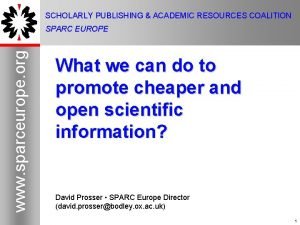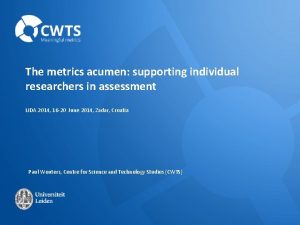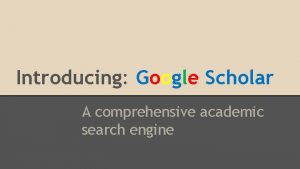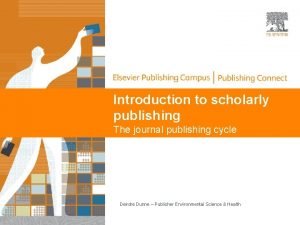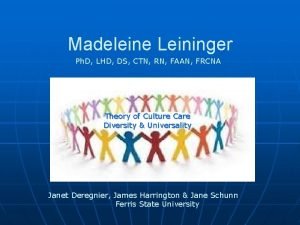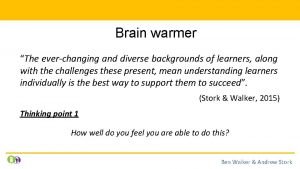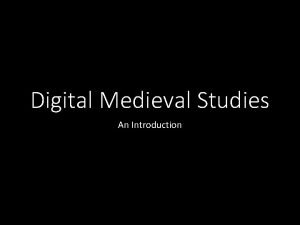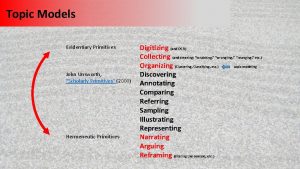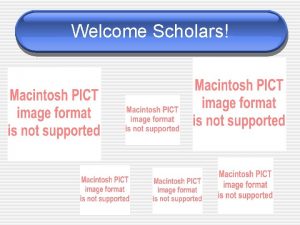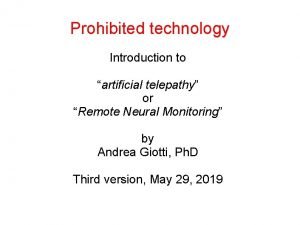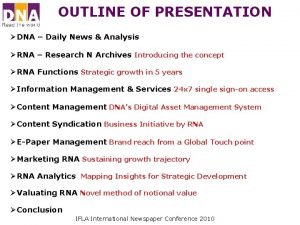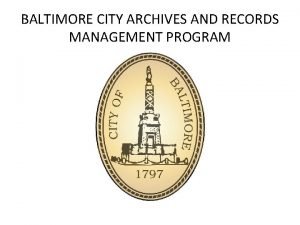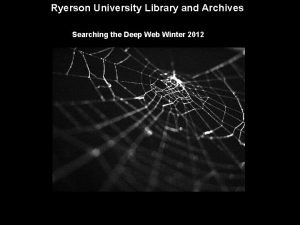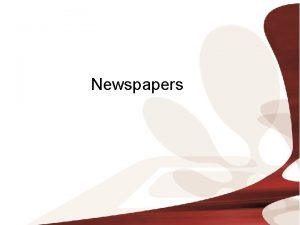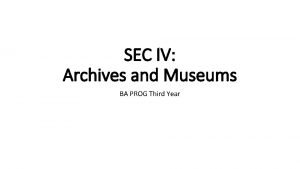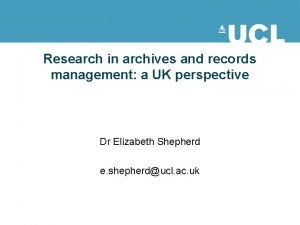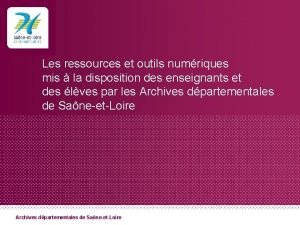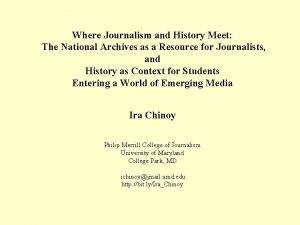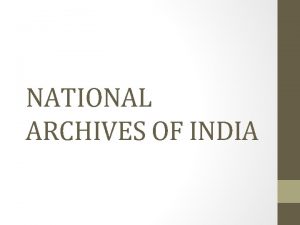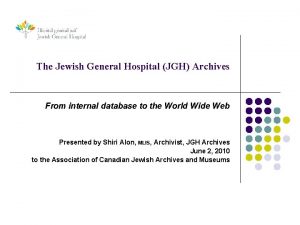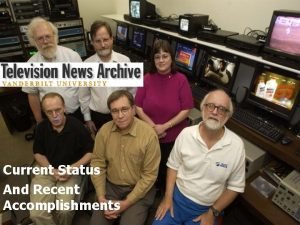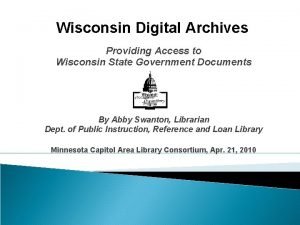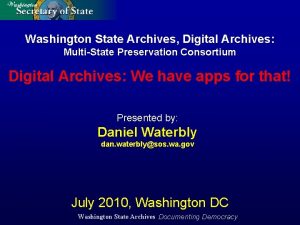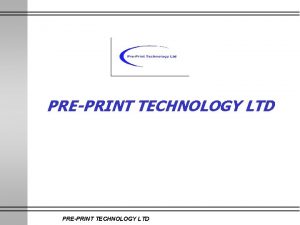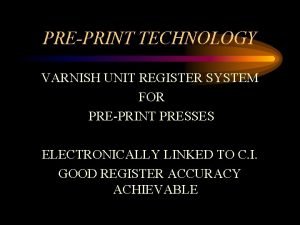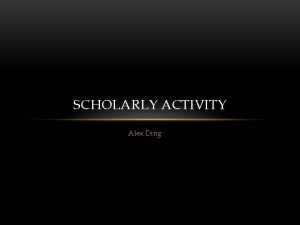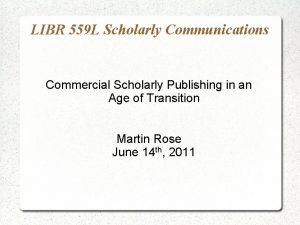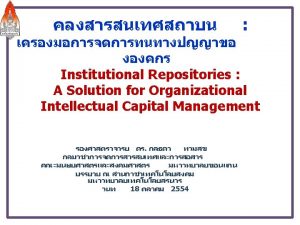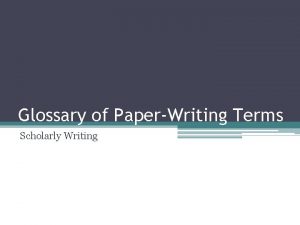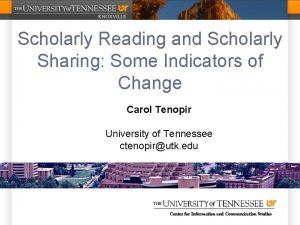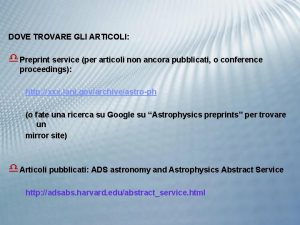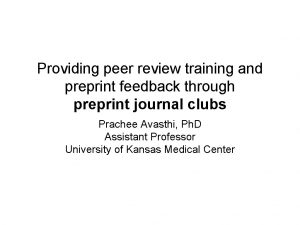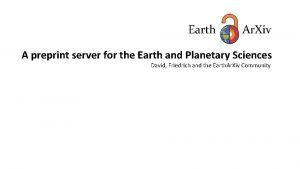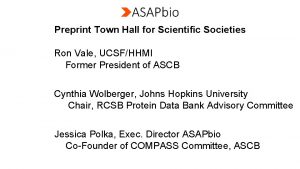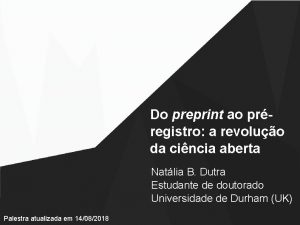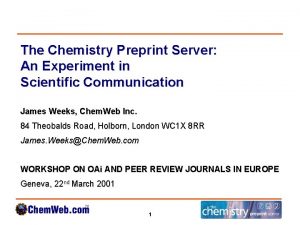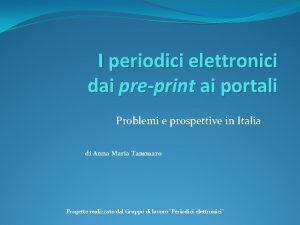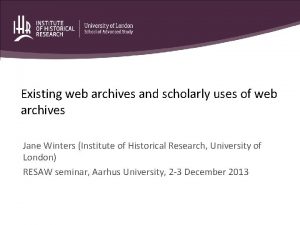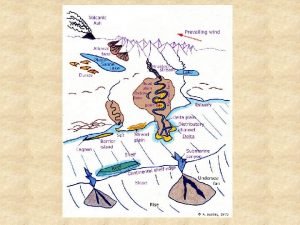EFFECTS OF ELECTRONIC PREPRINT ARCHIVES ON SCHOLARLY PHYSICS



































- Slides: 35

EFFECTS OF ELECTRONIC PREPRINT ARCHIVES ON SCHOLARLY PHYSICS ELECTRONIC JOURNAL PUBLISHING Jadranka Stojanovski, M. Sc. Ruđer Bošković Institute Library Zagreb, Croatia jadranka@nippur. irb. hr 24. 05. 2000. Jadranka Stojanovski

Overview • p-journals, role, publishing process, peer reviewing, advantages, disadvantages • shift to e-publishing, e-journals, changes in the publishing process, copyright issues, advantages, disadvantages • preprint archives creation • open archive initiatives • future of e-publishing 24. 05. 2000. Jadranka Stojanovski

motivating reasons for academics to publish • peer recognition, leading to promotion, tenure and increase in salaries • the wish to add to the sum of human knowledge in their own academic disciplines and to communicate with their colleagues • this reasons have not changed with the introduction of the ejournal! 24. 05. 2000. Jadranka Stojanovski

essential functions of the scholarly journal (according to Peter A. van Brakel) • building a collective knowledge base • communicating information • distribution rewards (priority, recognition, funding) – publish a lot (pressure for quantity) – publish work that makes an impact • building scientific communities 24. 05. 2000. Jadranka Stojanovski

• the scholarly journal has served as the primary medium of scholarly communication among scientist and scholars for more than three centuries, and has remained essentially unchanged 24. 05. 2000. Jadranka Stojanovski

the process of publishing following essential steps (Scarry, Patricia) : input – peer review – editing – manuscript preparation – issue composition – office management (providing preprints, offprints, book reviews) access 24. 05. 2000. Jadranka Stojanovski

State of the printed journal • there are to many journals • journal subscriptions are too expensive • journals are not selective enough • good articles remain unpublished • long publication delays 24. 05. 2000. Jadranka Stojanovski

peer review - current situation • • receipt of article by editor or publisher choice of referees (by the editor/s) mailing the articles to referees decision based on two or more referees’ reports and the editor’s judgement • communicating the decision to the author 24. 05. 2000. Jadranka Stojanovski

what are (should be) the rules? • the referee should remain anonymous • the referee must not disclose the contents of the article • the referee should not use the content of the article in his/her own research 24. 05. 2000. Jadranka Stojanovski

in the reality the refereeing system tends to – suppress new ideas – favor articles sourced from prestigious institutions – favor well-established authors – cause undue delays in publishing articles 24. 05. 2000. Jadranka Stojanovski

why electronic publishing? • not only to satisfy the needs of the author • users, and libraries as users representators, pushed to offer electronic journals • libraries are switching to providing access to information, instead of ownership • additional costs for administration, storage etc. is estimated to be just over 50% of a journal costing • number of researchers is growing, and in science and engineering the number of articles is doubled every 6 years 24. 05. 2000. Jadranka Stojanovski

advantages of ejournals. . . • desktop access • simultaneous accessibility • timeless accessibility • functional advantages of the electronic service as opposed to that of print (fast search, browse, print, download…) • additional facilities such as SDI and links to other internal and external information sources • possible reduction in costs for academic libraries 24. 05. 2000. Jadranka Stojanovski

. . . advantages of ejournals • submissions can be published much faster • universities, research institutes or authors could be more involved in the publishing - and retention of copyright by the originators may no longer be an issue 24. 05. 2000. Jadranka Stojanovski

disadvantages of ejournals • • • network delays publisher’s servers/passwords downloading full text to screen 20 % of ej have incomplete archives difficult tracking promotion and tenure committees at academic institutions gave often less or no weight to the work published in electronic journals 24. 05. 2000. Jadranka Stojanovski

Access • the easier the access to information sources is, the more likely the sources will be used • improved access (quicker publication, desktop access, improved search and retrieval tools, and lower cost) - reason which make electronic publishing really significant 24. 05. 2000. Jadranka Stojanovski

access via Internet via library web pages via so called aggregators collection of database (journals) from multiple producers (publishers), same interface (several types), connections (links) between databases, system can be adapted according to the user needs via CDROMs 24. 05. 2000. Jadranka Stojanovski

…access via commercial database hosts in the early 1980 s scholarly publishers such as Elsevier and the American Chemical Society (ACS) where offering well-known journals in electronic form via online host database systems via different projects 24. 05. 2000. Jadranka Stojanovski

24. 05. 2000. Jadranka Stojanovski

24. 05. 2000. Jadranka Stojanovski

24. 05. 2000. Jadranka Stojanovski

main subscription-based models • usually the subscription price for an electronic version is 120 -130% of the print price, but 20% of journals cost much more (200%) • the government guarantees the publishers’ income for three years and pays a small premium; in return publisher allow all UK universities to use all electronic journals as long as they purchase JUST ONE (UK national site licence pilot) 24. 05. 2000. Jadranka Stojanovski

changing roles • libraries are in the process of a major strategy change regarding their relationship with publishers • publishers (on the other side) try to retain absolute control of information • this exploitation of the copyright lows by publishers may seem to be an abuse of what was originally a means of protecting authors and inventors 24. 05. 2000. Jadranka Stojanovski

paradox • the academic community must pay for further copies of their own research or articles through the normal channels such as journals subscription, interlibrary loans and document delivery services!!! 24. 05. 2000. Jadranka Stojanovski

Los Alamos E-print Archive revolution • created 1991. by Paul Ginsparg and hosted at Los Alamos National Laboratory • xxx. lanl. gov • lanl. ar. Xiv. org • today we have other discipline archives to: computer science, cognitive science, 24. 05. 2000. Jadranka Stojanovski biomedical sciences, etc.

shift to the preprint archives • universal access to a communication medium immediate sharing results • turn-around of the traditional publishing is slow • the full transfer of rights from author to publisher • the current implementation of peer-review is too rigid, favor articles from prestigious institutions and cause publication delays • the imbalance between skyrocketing subscription prices and shrinking library budgets is creating an economic crisis for research libraries 24. 05. 2000. Jadranka Stojanovski

short history • August 1991 - the first database hep-th intended to serve 200 physicists • today - 150. 000 electronic transactions/day • entirely automated system • access via email, anonymous FTP, Web • accelerated communication • high energy physics community DID HAVE a pre-existing hardcopy preprint habit 24. 05. 2000. Jadranka Stojanovski

24. 05. 2000. Jadranka Stojanovski

24. 05. 2000. Jadranka Stojanovski

some characteristics • favorable economics: 1 Gb - $500 - 25. 000 papers => 2 cents apiece • politically correct elements: free access and participation for less developed countries • for some fields of physics the online electronic archives became the primary means of communicating ongoing research information • open (unrefereed) distribution of research could work well and has advantages for researchers 24. 05. 2000. Jadranka Stojanovski

…characteristics • efficient two-way transmission capabilities • automatic indexing • automated hyperlink references within papers • flexible framework for various publication and research habits, depending on scientific discipline 24. 05. 2000. Jadranka Stojanovski

(future) possibilities • replacing the existing conventional peer review process (one-time and all-or-nothing binary decision!) • to create an interface for free and global peer review on one side, and • interface for filtering papers during search on the other side • annotations, reviews, corrections, descriptions, hyperlinks…fluid literature as the research is (not frozen on paper!) 24. 05. 2000. Jadranka Stojanovski

impact on (p- and e-) journals • shrinking delays in publishing process (1 year 3 months) • more objective peer review • more flexible copyright agreements (there is no need to have “self-piracy” 24. 05. 2000. Jadranka Stojanovski

Open Archive Initiative (Santa Fe) • dedicated to establishing metadata tagging conventions that will allow all open archives to be “interoperable” • interconnection through archives • access and retrieve one big, seamless, virtual archive any university could be able to create an open archive 24. 05. 2000. Jadranka Stojanovski

Scholarly publishing must improve its essential purposes: • easy to identify the most important scholarly work being produced • help the author develop professionally • skilled editorial assistance • intelligent peer review • present the work in an attractive format that makes it available to the widest possible audience 24. 05. 2000. Jadranka Stojanovski

24. 05. 2000. Jadranka Stojanovski
 Scholarly publishing and academic resources coalition
Scholarly publishing and academic resources coalition Scholarly acumen
Scholarly acumen Academic search google
Academic search google Focalogy
Focalogy Madeleine leininger scholarly articles
Madeleine leininger scholarly articles Scholarly tutoring
Scholarly tutoring Scholarly
Scholarly Csun scholarly articles
Csun scholarly articles Project management scholarly articles
Project management scholarly articles Scholarly primitives
Scholarly primitives Scholarly habits
Scholarly habits Electronic field production examples
Electronic field production examples Scrip exchange
Scrip exchange Artificial telepathy
Artificial telepathy E waste durban
E waste durban Indot rfp archives
Indot rfp archives National archives gb rail 253/516
National archives gb rail 253/516 Sheffield local studies library
Sheffield local studies library Dna epaper archives
Dna epaper archives Interim archives
Interim archives Baltimore city archives
Baltimore city archives Ryerson library archives
Ryerson library archives Bellshill speaker archives
Bellshill speaker archives Archives and museums du study material
Archives and museums du study material Ucl archives and records management
Ucl archives and records management Coloured gemstones working group archives
Coloured gemstones working group archives Www.archives.71fr
Www.archives.71fr Religious archives examples
Religious archives examples National archives
National archives 1940 census.archives.gov
1940 census.archives.gov National archives of india class 8
National archives of india class 8 Jewish general hospital pharmacy
Jewish general hospital pharmacy Library and archives canada
Library and archives canada Vanderbilt news archives
Vanderbilt news archives Covilib
Covilib Ducumom
Ducumom
